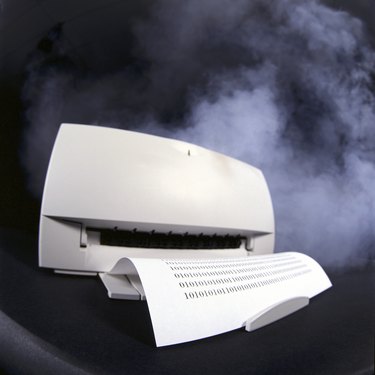
Computers can be frustrating, and printers can be even worse. And among printer problems, one of the most annoying things you can run into is a printer that seems fine but refuses to work. If your computer claims that your printer is offline, there are a few steps you can take.
Check the Printer
Video of the Day
Make sure the printer is plugged in and turned on. Are there any warning lights on? If there are, check the documentation that came with your printer and determine what those lights mean. Check to see if the printer has any sort of "Connected to the network" indicator light. If it does, make sure that it is on. Restart your printer if you think it is not responding properly.
Video of the Day
Drivers
A driver is a piece of software that tells your printer how to behave. If you do not have the proper drivers installed, your computer may have problems identifying your printer on the network. Look for the setup disc that came with your printer. The drivers should be on the disc. If you can't find the disc, go to the website for your printer's manufacturer. The company should offer the driver as a free download.
Wired Connection
If your printer is connected to your computer via a cord, the problem could be with the cord itself. Make sure that the cord is plugged firmly into both your computer and into the printer. Check the wire for any kinks or cuts. If the wire looks like it is in bad shape, you may want to replace it. If the wire looks like it is in good shape, try simply unplugging it and then plugging it back in.
Wireless Connection
If your printer is connected to your network via a wireless connection, the connection itself could be the issue. First, check your computer's wireless adapter. If it doesn't seem to be working properly, reset it. Make sure that the printer is not too far away from your computer. Reset your printer's wireless signal as well. If your printer is only intermittently offline, this is probably an issue with the printer's wireless signal.